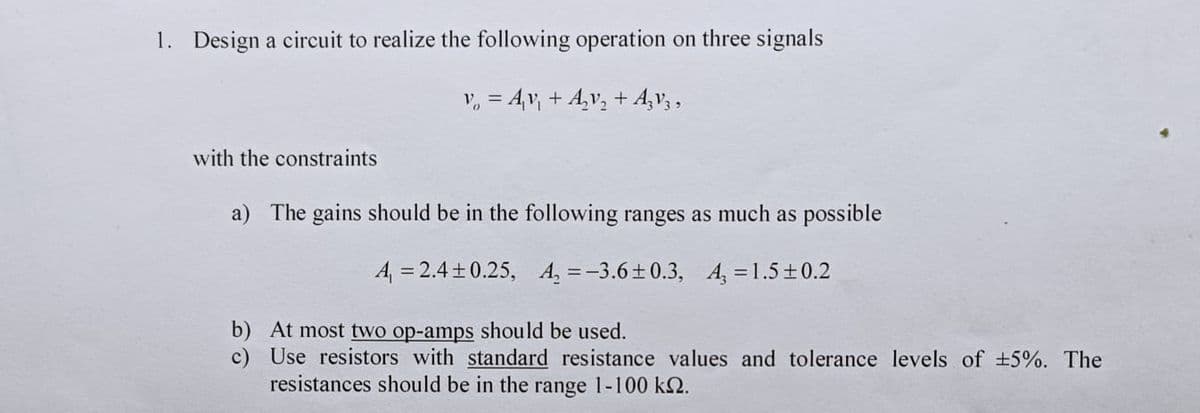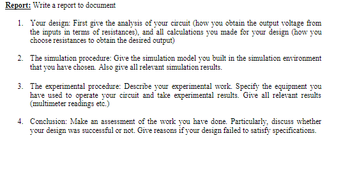1. Design a circuit to realize the following operation on three signals v=A₁v₁ + A₂v₂ + AzV3, with the constraints a) The gains should be in the following ranges as much as possible A₁ = 2.4±0.25, A₂ = -3.6±0.3, A₂ = 1.5±0.2 b) At most two op-amps should be used. c) Use resistors with standard resistance values and tolerance levels of ±5%. The resistances should be in the range 1-100 km2.
solve,a,b and c

Step by step
Solved in 3 steps with 3 images

for this circuit do this task
Simulate the circuit using the simulation software multisim and verify that the circuit performsthe targeted function.Perform tests on your circuit which would verify that the gains remain in the specified rangeswhen the resistances have random errors determined by the tolerance levels (e.g. a 100-Ω resistor with ±5% tolerance may have a resistance value in the range 95-105Ω).
Make a Report of this experiment
1. I need to give the analysis of this circuit(how i obtain the output voltage from the inputs in terms of resistances) and all calculations that has been made for this design (how the resistances has been chosen to obtain the desired output)
2. Cocnlusion: Make an assesment of the work that has been done. Particularly , discuss whether the design was successful or not. Give reasons if the design failed to satisfy specifications
can you solve part 1 and 4









